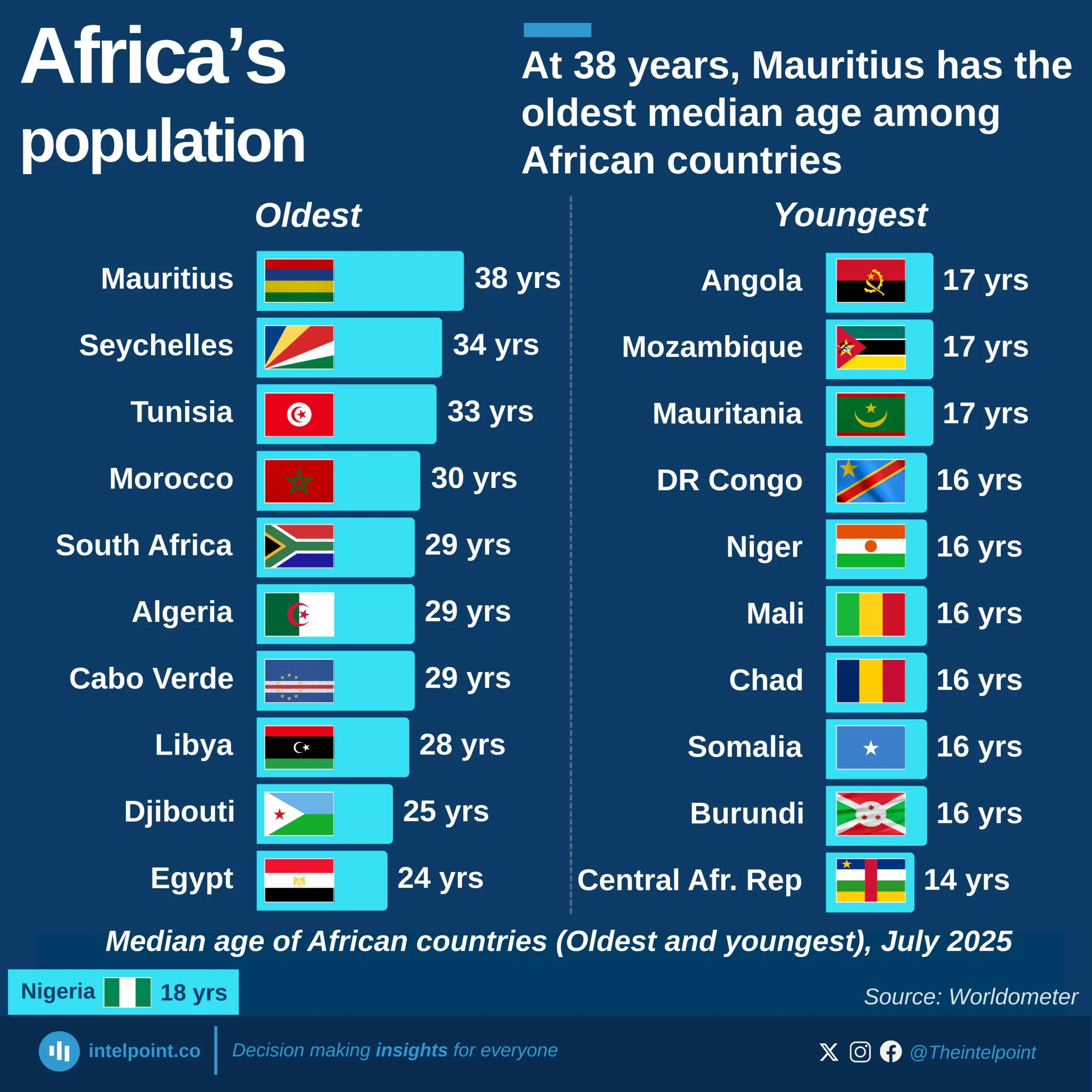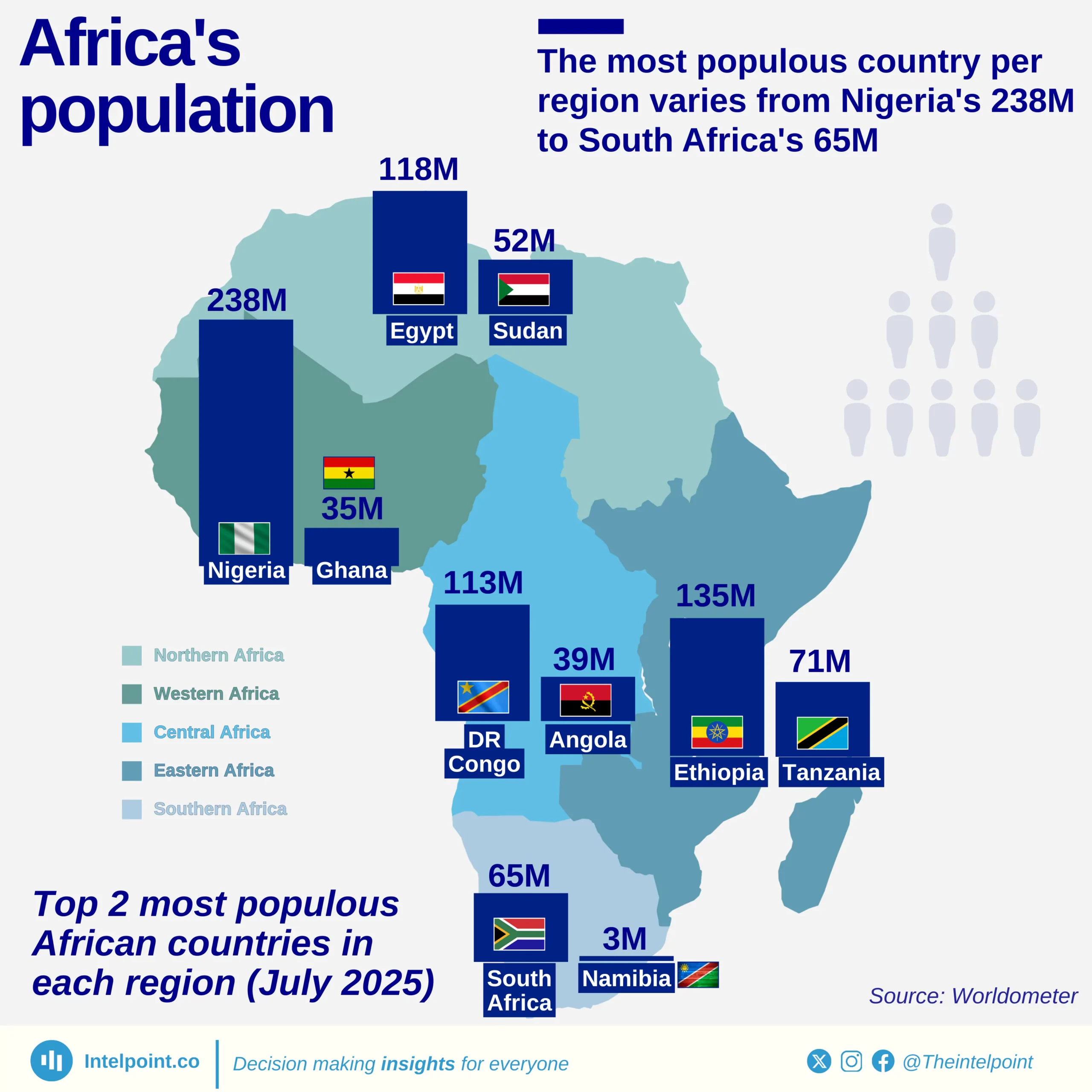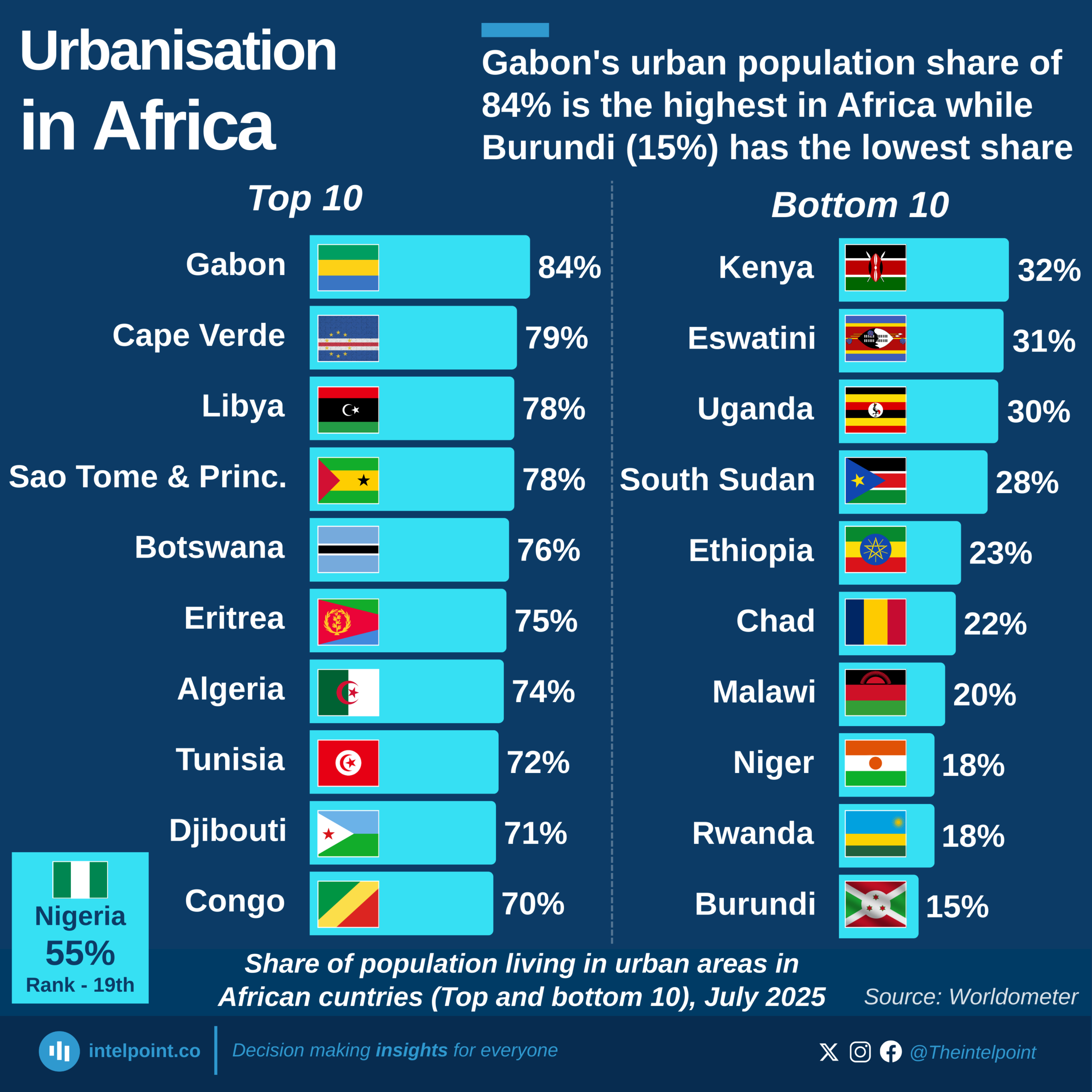Over the past 76 years, global population growth has reshaped the demographic balance between continents, with Africa experiencing the fastest growth. From just 228 million people in 1950, Africa’s population has expanded by over 580%, reaching 1.6 billion in 2025—a number that is now more than double Europe’s population.
In 1950, Africa’s population was less than half of Europe’s. Today, however, Africa has overtaken Europe by a wide margin and is shaping the future of the global labour force, consumer markets, and urban development. This explosive growth points to both opportunities and challenges—from economic potential to infrastructure needs and sustainability concerns.
Asia remains the most populated continent, growing from 1.4 billion in 1950 to nearly 4.8 billion in 2025, a 253% increase. Meanwhile, Europe has seen only modest growth of 35.6% over the same period, with its population rising from 549 million to 744 million. Other regions, such as Latin America & the Caribbean (298% growth) and Northern America (131% growth), have also recorded significant increases, though none as dramatic as Africa’s.





